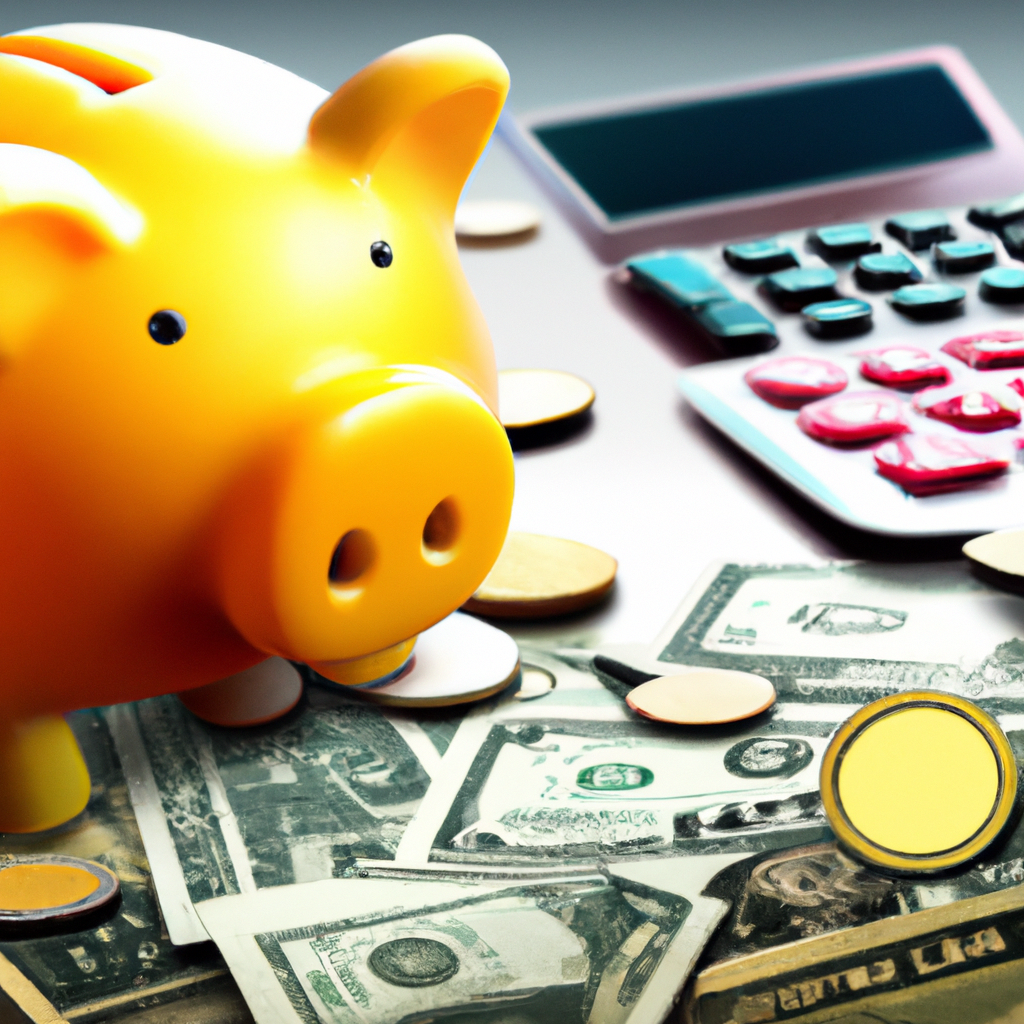Imagine a life free from the burden of car loans or consumer debt weighing you down. Picture a future where your financial stress is lifted, and you can confidently pursue your dreams and aspirations without the constant worry of monthly payments. In this article ‘From Debt to Freedom: How to Eliminate Car Loans and Consumer Debt Effectively’, we will explore effective strategies and practical tips to help you eliminate car loans or any other consumer debt that may be holding you back. Together, let’s embark on a journey towards financial freedom and reclaim control over your financial well-being.

Understanding Car Loans
The Basics of Car Loans
Car loans are a popular financing option for individuals looking to purchase a car. When you take out a car loan, the lender provides you with the funds needed to buy the car, and you agree to repay the loan over a specified period of time, typically with interest. Car loans are typically secured loans, meaning the car itself serves as collateral. This provides the lender with a level of security in case the borrower defaults on their loan payments.
The Pros and Cons of Car Loans
Car loans offer several advantages. They provide individuals with the opportunity to purchase a car without having to save up the full amount, making car ownership more accessible. Additionally, having a car loan can help individuals build credit history if they make their loan payments on time. However, there are also downsides to consider. Car loans come with interest, which means you end up paying more for the car than its actual price. Moreover, if you fail to make your loan payments, the lender can repossess your car, causing financial and logistical challenges.
Common Mistakes to Avoid
When it comes to car loans, it’s important to avoid common mistakes that can lead to long-term financial difficulties. One common mistake is not thoroughly researching and comparing different loan options before committing to one. Taking the time to shop around and find the best interest rates and terms can save you significant money in the long run. Additionally, it’s important to understand your budget and not overestimate how much you can afford to borrow. Taking on a car loan that is too expensive can strain your finances and make it difficult to meet other financial obligations.
The Burden of Consumer Debt
Impact of Consumer Debt on Individuals
Consumer debt refers to any debt accumulated by individuals for personal, non-business purposes. This includes credit card debt, personal loans, and other forms of borrowing. The burden of consumer debt can have a significant impact on individuals’ lives. It can lead to high levels of stress and anxiety as individuals struggle to make monthly payments and manage their financial obligations.
Effects of Consumer Debt on the Economy
Consumer debt not only affects individuals but also has broader implications for the economy. When individuals have high levels of debt, they have less disposable income to spend on goods and services. This can lead to decreased consumer spending, which can negatively impact businesses and economic growth. Moreover, if individuals default on their debt payments, it can lead to a financial crisis, as we saw during the 2008 global financial crisis.
The Psychological Toll of Consumer Debt
Consumer debt can take a toll on individuals’ mental and emotional well-being. The constant burden of debt can lead to feelings of shame, guilt, and anxiety. It can also strain relationships, as individuals may feel embarrassed or judged by their significant other or family members. The psychological impact of consumer debt should not be underestimated, and finding ways to eliminate debt and improve financial well-being is crucial.
The Benefits of Eliminating Car Loans and Consumer Debt
Improved Financial Stability
One of the primary benefits of eliminating car loans and consumer debt is improved financial stability. By reducing or eliminating debt obligations, individuals have more control over their finances and can allocate their income towards savings and investments. This increased financial stability provides a sense of security and allows individuals to better plan for their future.
Reduced Stress and Anxiety
Eliminating car loans and consumer debt can significantly reduce stress and anxiety levels. Removing the burden of monthly debt payments allows individuals to focus on other aspects of their lives without the constant worry of meeting financial obligations. This improved mental and emotional well-being can have a positive impact on overall quality of life.
Opportunity for Future Savings and Investments
By eliminating car loans and consumer debt, individuals free up more income that can be directed towards savings and investments. Building a robust savings account and investing for the future are key components of long-term financial success. Whether it’s saving for a down payment on a house, planning for retirement, or starting a business, being debt-free opens up numerous opportunities for future financial growth.
Strategies for Eliminating Car Loans and Consumer Debt
Developing a Debt Repayment Plan
A crucial first step in eliminating car loans and consumer debt is developing a debt repayment plan. This involves assessing all existing debts, including car loans, credit card debt, and personal loans, and creating a strategy to systematically pay off these debts. It’s important to prioritize high-interest debts and consider strategies such as the Debt Snowball or Debt Avalanche method, which we will discuss later in this article.
Budgeting and Cutting Expenses
To accelerate the debt repayment process, it’s important to create a budget and identify areas where expenses can be trimmed. This could mean reducing discretionary spending, avoiding unnecessary purchases, or finding ways to save on daily expenses. By allocating a larger portion of your income towards debt repayment, you can expedite the process of becoming debt-free.
Increasing Income to Accelerate Debt Repayment
Another effective strategy for eliminating car loans and consumer debt is to increase your income. This can be achieved through various means, such as taking on a side hustle, freelancing, or seeking additional sources of income. By boosting your monthly income, you can allocate more funds towards debt repayment, which can ultimately shorten the timeline for becoming debt-free.
Negotiating Debt Settlement or Refinancing Options
Depending on your financial situation, it may be worth exploring debt settlement or refinancing options. Debt settlement involves negotiating with creditors to reduce the amount owed in exchange for a lump sum payment. Refinancing, on the other hand, involves obtaining a new loan with better terms to pay off existing debt. These options can help lower interest rates or reduce the overall debt amount, making it more manageable to pay off.

Debt Snowball Method
Explanation of Debt Snowball Method
The Debt Snowball method is a debt repayment strategy developed by personal finance expert Dave Ramsey. With this method, you prioritize paying off debts from smallest to largest balance, regardless of interest rates. The idea behind the Debt Snowball is to create momentum and motivation by experiencing small wins as you eliminate smaller debts, which then allows you to tackle larger debts with more confidence.
Step-by-Step Guide to Implementing the Debt Snowball Method
To implement the Debt Snowball method, follow these steps:
- List all of your debts from smallest to largest balance.
- Make minimum payments on all debts except the smallest one.
- Allocate any extra funds towards paying off the smallest debt.
- Once the smallest debt is paid off, take the total amount you were paying towards it and apply it to the next smallest debt.
- Repeat this process until all debts are paid off, using the funds freed up from paid-off debts to tackle larger debts.
Success Stories and Testimonials
Many individuals have successfully used the Debt Snowball method to eliminate their car loans and other consumer debts. Through determination, discipline, and the structured approach of the Debt Snowball, people have been able to achieve debt freedom. Countless testimonials and success stories can be found online, serving as motivation and inspiration for those looking to follow a similar path.
Debt Avalanche Method
Explanation of Debt Avalanche Method
The Debt Avalanche method is another debt repayment strategy that focuses on paying off debts based on interest rates, rather than the balance. With this method, you prioritize paying off debts with the highest interest rates first, while making minimum payments on lower-interest debts. The goal is to minimize the overall interest paid and eliminate high-interest debts more efficiently.
Step-by-Step Guide to Implementing the Debt Avalanche Method
To implement the Debt Avalanche method, follow these steps:
- List all of your debts from highest to lowest interest rate.
- Make minimum payments on all debts except the one with the highest interest rate.
- Allocate any extra funds towards paying off the debt with the highest interest rate.
- Once the highest-interest debt is paid off, take the total amount you were paying towards it and apply it to the next debt with the highest interest rate.
- Repeat this process until all debts are paid off, using the funds freed up from paid-off debts to tackle debts with lower interest rates.
Comparing Debt Snowball and Debt Avalanche Methods
Both the Debt Snowball and Debt Avalanche methods have their merits. The Debt Snowball method focuses on building momentum and motivation, as you experience small wins by paying off smaller debts first. This method can be particularly beneficial for those who thrive on immediate rewards and need the psychological boost of progress. On the other hand, the Debt Avalanche method prioritizes saving money on interest payments by targeting high-interest debts first. This method may be more suitable for individuals who are motivated by long-term savings and are willing to delay gratification for bigger financial gains.

Seeking Professional Help for Debt Elimination
Counseling Services and Financial Advisers
If you find yourself overwhelmed by car loans and consumer debt, seeking professional help can be a wise decision. Credit counseling services and financial advisers specialize in helping individuals manage their finances, develop debt repayment plans, and provide guidance on budgeting and saving. These professionals can provide valuable insights and personalized advice tailored to your specific financial situation.
Debt Consolidation and Debt Management
Debt consolidation and debt management programs are options to consider if you have multiple debts and want to streamline your repayment process. Debt consolidation involves combining all of your debts into a single loan with one monthly payment, typically with a lower interest rate. Debt management programs, on the other hand, involve working with a credit counseling agency to negotiate lower interest rates and develop a repayment plan.
Bankruptcy as a Last Resort
Bankruptcy should only be considered as a last resort for eliminating car loans and consumer debt. Bankruptcy has significant long-term consequences and should not be taken lightly. It can have a detrimental impact on your credit score, making it challenging to obtain loans in the future. Additionally, bankruptcy can result in the liquidation of assets and may not discharge all types of debt. It’s crucial to consult with a bankruptcy attorney and carefully weigh the pros and cons before considering this option.
Maintaining a Debt-Free Lifestyle
Establishing Emergency Funds
Once you have successfully eliminated your car loans and consumer debt, it’s important to establish emergency funds. Emergency funds provide a financial safety net in case of unexpected expenses or income loss. Aim to save three to six months’ worth of living expenses in an easily accessible savings account. This can help prevent the need to take on new debt in the event of an emergency.
Setting Financial Goals
To maintain a debt-free lifestyle and continue on a path of financial success, it’s essential to set financial goals. Whether it’s saving for retirement, purchasing a home, or starting a business, having clear goals helps guide your financial decisions and keeps you motivated. Create a plan by setting specific, measurable, attainable, relevant, and time-bound (SMART) goals to ensure that you stay on track.
Lifestyle Changes to Prevent Future Debt
To avoid falling back into debt, it’s essential to make lifestyle changes that promote financial stability. This may include reevaluating your spending habits, becoming more mindful of your financial choices, and adopting frugal living practices. It’s important to distinguish between wants and needs and make conscious decisions about how you allocate your income. By making sustainable changes, you can prevent future debt and enjoy the benefits of a debt-free lifestyle.

Dealing with Temptations and Impulsive Buying
Understanding the Root Causes of Impulsive Buying
Impulsive buying can be a major hurdle in maintaining a debt-free lifestyle. To overcome this challenge, it’s important to understand the root causes of impulsive buying. Impulsive buying often stems from emotional triggers, such as stress, boredom, or the desire for instant gratification. Recognizing these triggers and finding healthier ways to cope with emotions can help you avoid impulsive purchases and stay on track with your financial goals.
Implementing Strategies to Curb Impulsive Buying
To curb impulsive buying, there are several strategies you can implement. One effective strategy is to practice delayed gratification. When you feel the urge to make an impulse purchase, give yourself a cooling-off period, such as 24 hours or a few days, to reconsider the purchase. This allows time for logical thinking and evaluation of the necessity or value of the item. Additionally, creating a budget and sticking to a shopping list can help you make more intentional and rational purchasing decisions.
The Importance of Emotional Well-being in Debt Management
Emotional well-being plays a significant role in debt management and maintaining a debt-free lifestyle. Managing stress, practicing self-care, and developing healthy coping mechanisms are crucial for making sound financial decisions. It’s important to prioritize self-care activities that nurture your mental and emotional health, such as exercise, relaxation techniques, and spending quality time with loved ones. Taking care of your emotional well-being can help you stay focused, motivated, and resilient in your journey towards financial freedom.
Conclusion
The Long-term Benefits of Eliminating Car Loans and Consumer Debt
Eliminating car loans and consumer debt comes with numerous long-term benefits. It provides you with improved financial stability, reduced stress and anxiety levels, and the opportunity to save and invest for the future. By taking control of your finances and eliminating debt, you pave the way for a more secure and financially independent future.
Empowering Individuals to Take Control of Their Finances
Eliminating car loans and consumer debt empowers individuals to take control of their finances. It allows individuals to make informed financial decisions, prioritize their goals, and align their spending habits with their long-term aspirations. By gaining control over your financial situation, you can create a better future for yourself and your loved ones.
Creating a Debt-Free and Financially Secure Future
By following the strategies and methods discussed in this article, you can create a debt-free and financially secure future for yourself. It may require discipline, perseverance, and sacrifice, but the rewards are well worth it. Imagine a life free from the burden of debt, where you have the freedom to pursue your dreams and enjoy peace of mind. With determination and proper financial management, you can turn this vision into reality.


